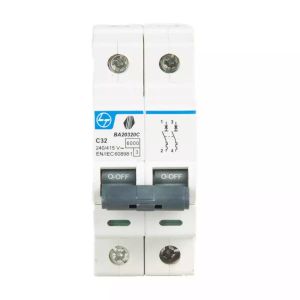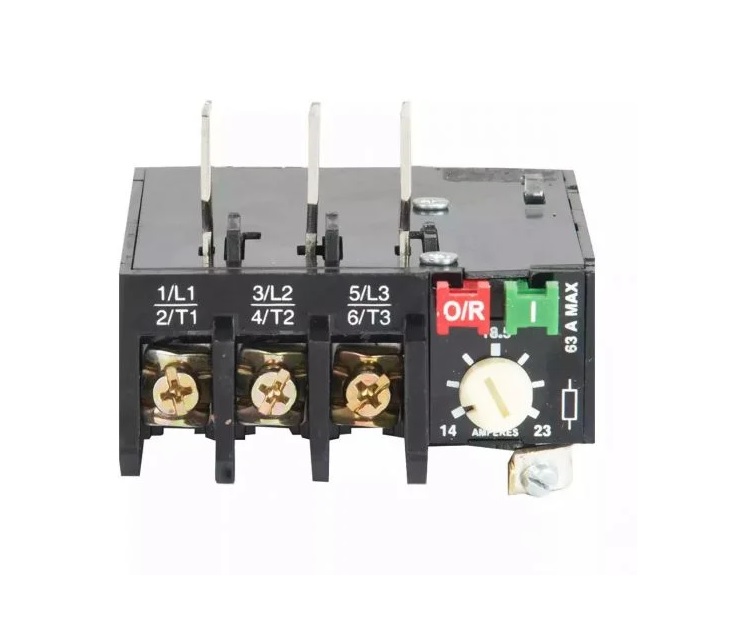
In the world of electrical systems, safety stands as a paramount concern. Whether it's in our homes, offices, or industrial setups, ensuring the smooth functioning and protection of electrical circuits is non-negotiable. Miniature Circuit Breakers (MCBs) emerge as indispensable components in this regard, offering a robust defense mechanism against electrical faults. This blog delves into the intricacies of MCB electrical switches, their electrical significance, different types available, and factors influencing their pricing.
What are MCB Switches?
MCB switches serve as pivotal elements in electrical distribution boards or consumer units. They're designed to protect electrical circuits from overloads and short circuits, thereby preventing damage to equipment and mitigating the risk of fire hazards. Think of them as sentinels guarding the electrical network, swiftly disconnecting the power supply upon detecting abnormalities.
Functionality
The functionality of MCB switches is straightforward yet crucial. When a circuit experiences an overload or a short circuit, the current passing through it exceeds the predetermined limit. In such instances, the MCB swiftly interrupts the flow of electricity, effectively breaking the circuit and preventing any further damage. This rapid response time is vital in averting potential accidents and safeguarding both property and lives.
Types of MCBs
1. Type B MCBs:
These are the standard MCBs primarily used for domestic and commercial applications, offering protection against moderate overloads and short circuits commonly encountered in everyday electrical systems.
2. Type C MCBs:
With a slightly higher tripping characteristic, Type C MCBs are suitable for circuits with devices that exhibit moderate to high inrush currents upon startup, such as motors or fluorescent lighting.
3. Type D MCBs:
Designed for more specialized applications involving equipment with high inrush currents, Type D MCBs offer robust protection against severe overloads and short circuits, making them ideal for industrial settings.
Factors Influencing MCB Price
1. Current Rating:
The rated current capacity of an MCB significantly influences its pricing. MCBs with higher current ratings, capable of handling larger electrical loads, typically command a higher price due to their enhanced capacity and performance.
2. Tripping Characteristics:
MCBs with different tripping characteristics cater to varying applications. Type B MCBs, being the most common, are generally more affordable compared to Type C and Type D MCBs, which offer specialized protection and command a premium.
3. Brand and Quality:
Established brands known for their quality and reliability often price their MCBs higher than lesser-known counterparts. While the initial cost might be higher, opting for reputable brands can offer peace of mind regarding product durability and performance.
4. Number of Poles:
MCBs are available in single-pole, double-pole, and three-pole configurations, with each serving specific requirements. Multi-pole MCBs, offering protection across multiple phases, tend to be pricier than their single-pole counterparts due to their added functionality.
5. Additional Features:
Certain MCBs come equipped with additional features such as adjustable tripping settings, remote operation capabilities, and built-in surge protection. These added functionalities contribute to a higher price point but offer enhanced versatility and protection.
Installation and Maintenance
Proper installation and regular maintenance are imperative to ensure the optimal performance of switches. During installation, it's crucial to adhere to manufacturer guidelines and industry standards to guarantee correct wiring and connection. Additionally, periodic inspections and testing help identify any potential issues and ensure that the MCBs continue to function effectively over time.
Routine maintenance tasks include checking for signs of wear or damage, verifying proper operation through manual testing, and tightening connections to prevent loose fittings. Any anomalies detected during these inspections should be promptly addressed to prevent potential risks and maintain the integrity of the electrical system.
Importance of MCBs in Different Settings
1. Residential Applications:
In homes, MCBs protect electrical circuits powering lights, appliances, and other devices from overloads and short circuits. They offer peace of mind to homeowners by minimizing the risk of electrical fires and equipment damage, making them an essential component of modern electrical installations.
2. Commercial Establishments:
MCBs play a vital role in commercial settings such as offices, retail spaces, and restaurants, where electrical loads vary and safety is paramount. By promptly interrupting power during electrical faults, MCBs help ensure uninterrupted business operations and safeguard valuable assets.
3. Industrial Environments:
Industrial facilities often deal with heavy machinery and complex electrical systems, making robust protection against electrical faults a necessity. Type D MCBs, with their ability to handle high inrush currents and severe overloads, find widespread use in industrial applications, where equipment safety and operational continuity are critical.
Future Trends and Innovations
As technology advances, the landscape of electrical protection continues to evolve. Emerging trends such as smart MCBs equipped with remote monitoring and control capabilities are poised to revolutionize the way electrical systems are managed and maintained. These innovations offer enhanced functionality, allowing users to monitor power consumption, diagnose faults remotely, and optimize energy usage for greater efficiency and sustainability.
Conclusion
In conclusion, MCB switches play a pivotal role in ensuring the safety and reliability of electrical installations across various domains. Understanding their functionality, types, and factors influencing pricing is essential for making informed decisions regarding their selection and installation. While cost is undoubtedly a factor, prioritizing quality and compatibility with specific application requirements is paramount. Investing in reliable MCBs not only safeguards against potential electrical hazards but also ensures the longevity and efficiency of electrical systems in the long run. So, whether you're upgrading your home's electrical panel or outfitting an industrial facility, choosing the right MCBs is an investment in safety and peace of mind.





Comments